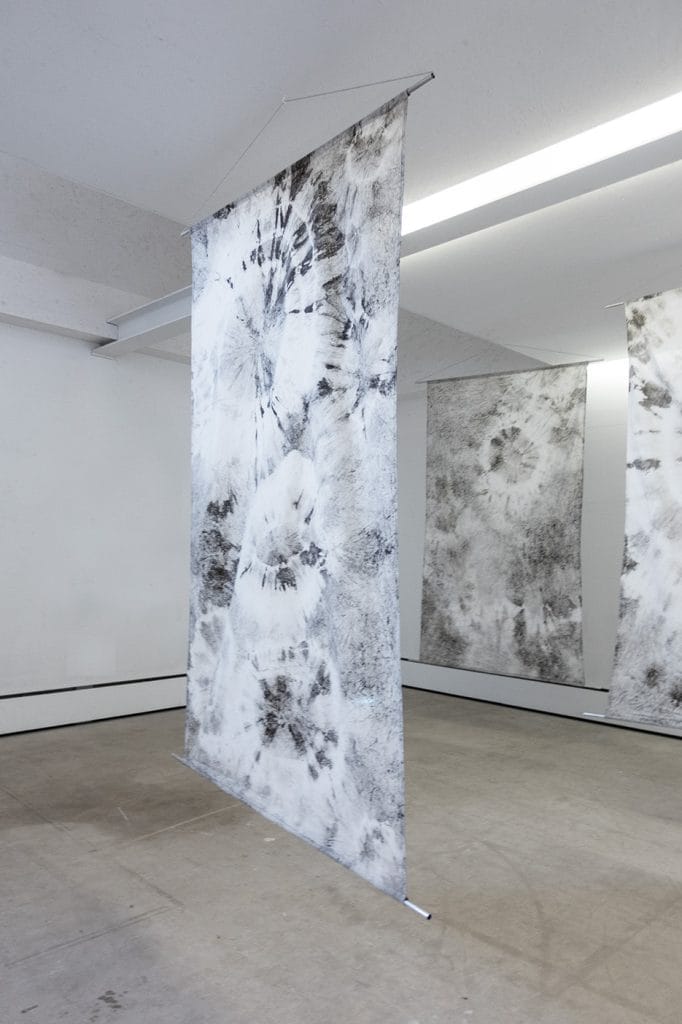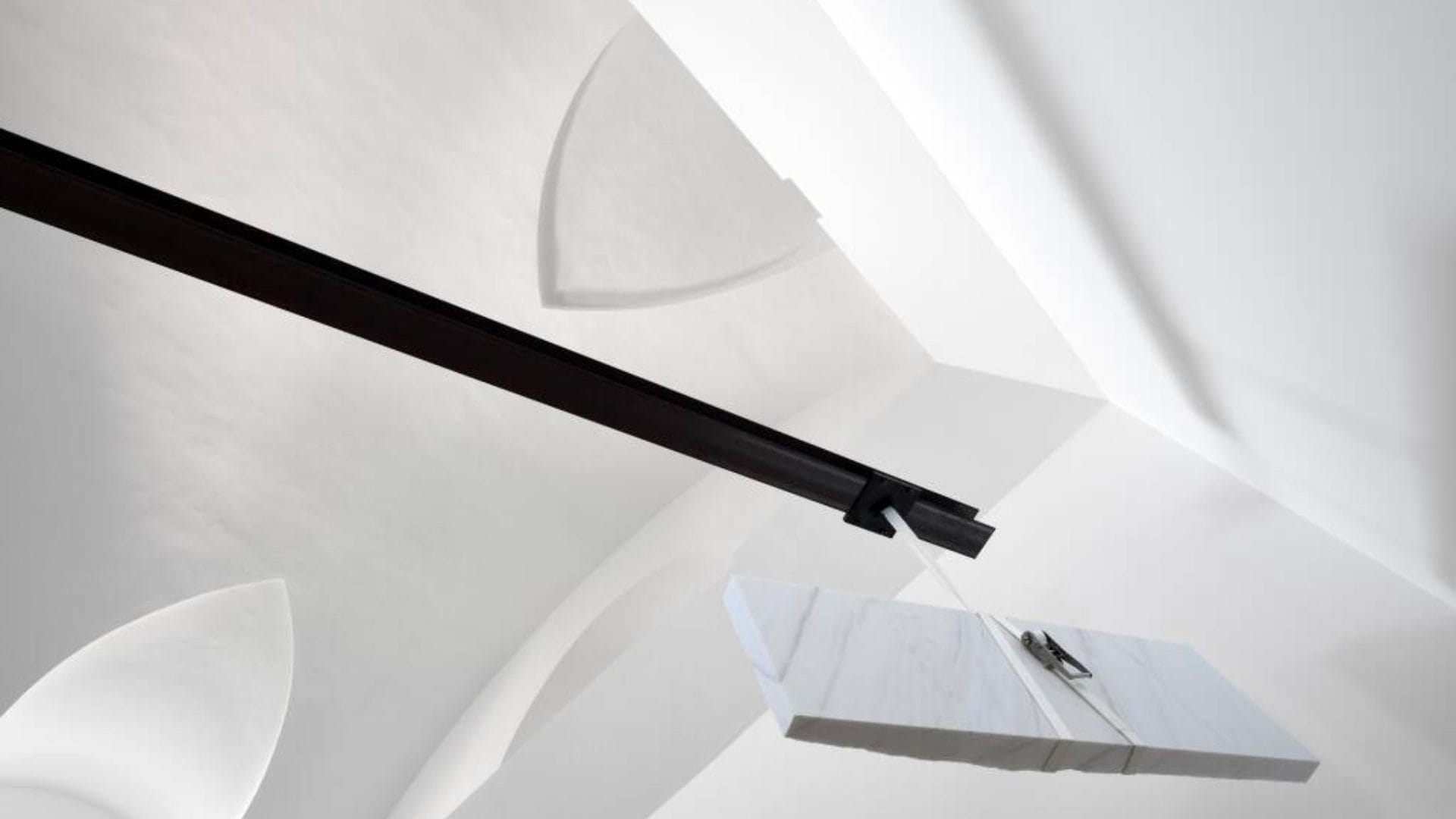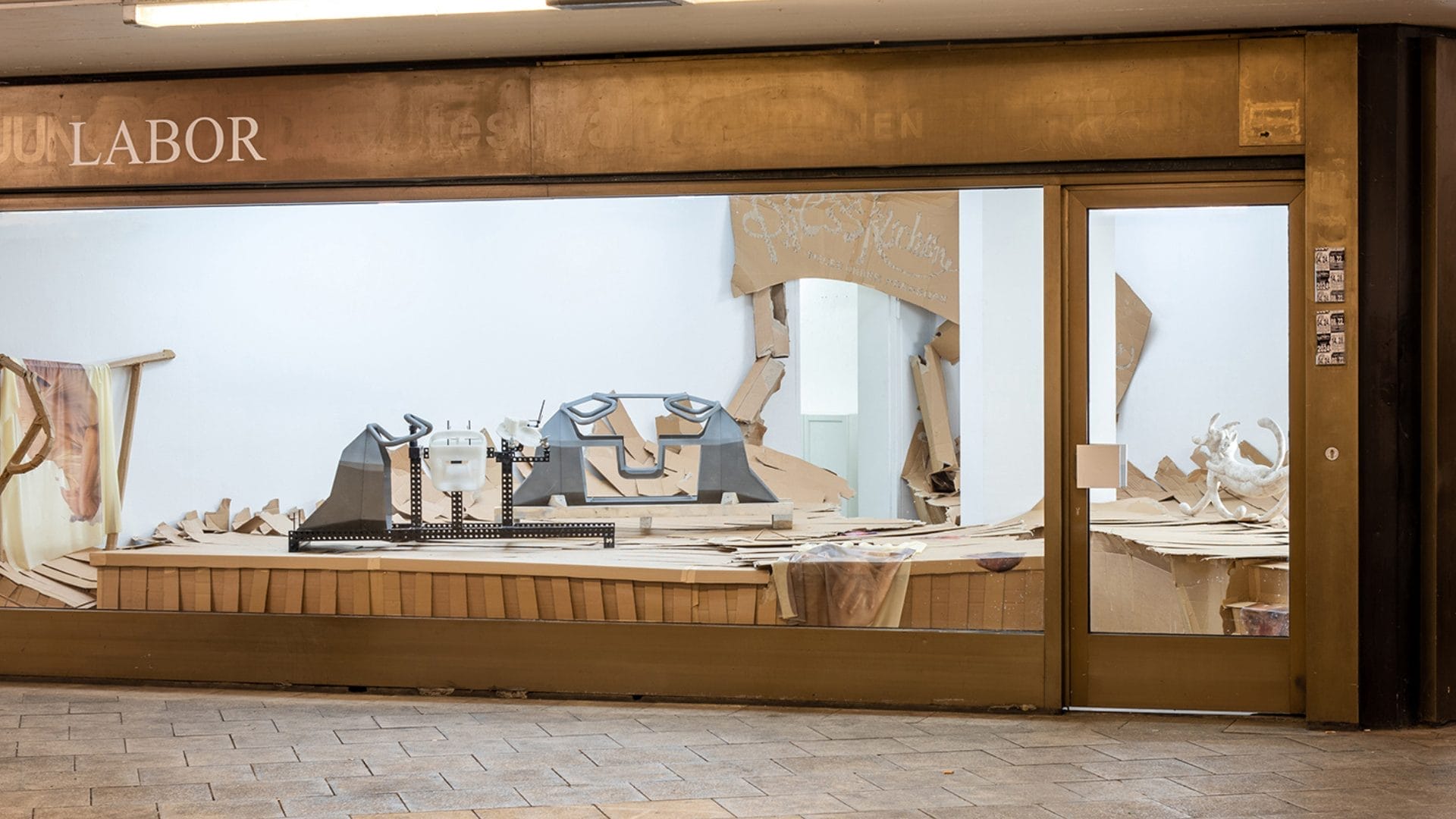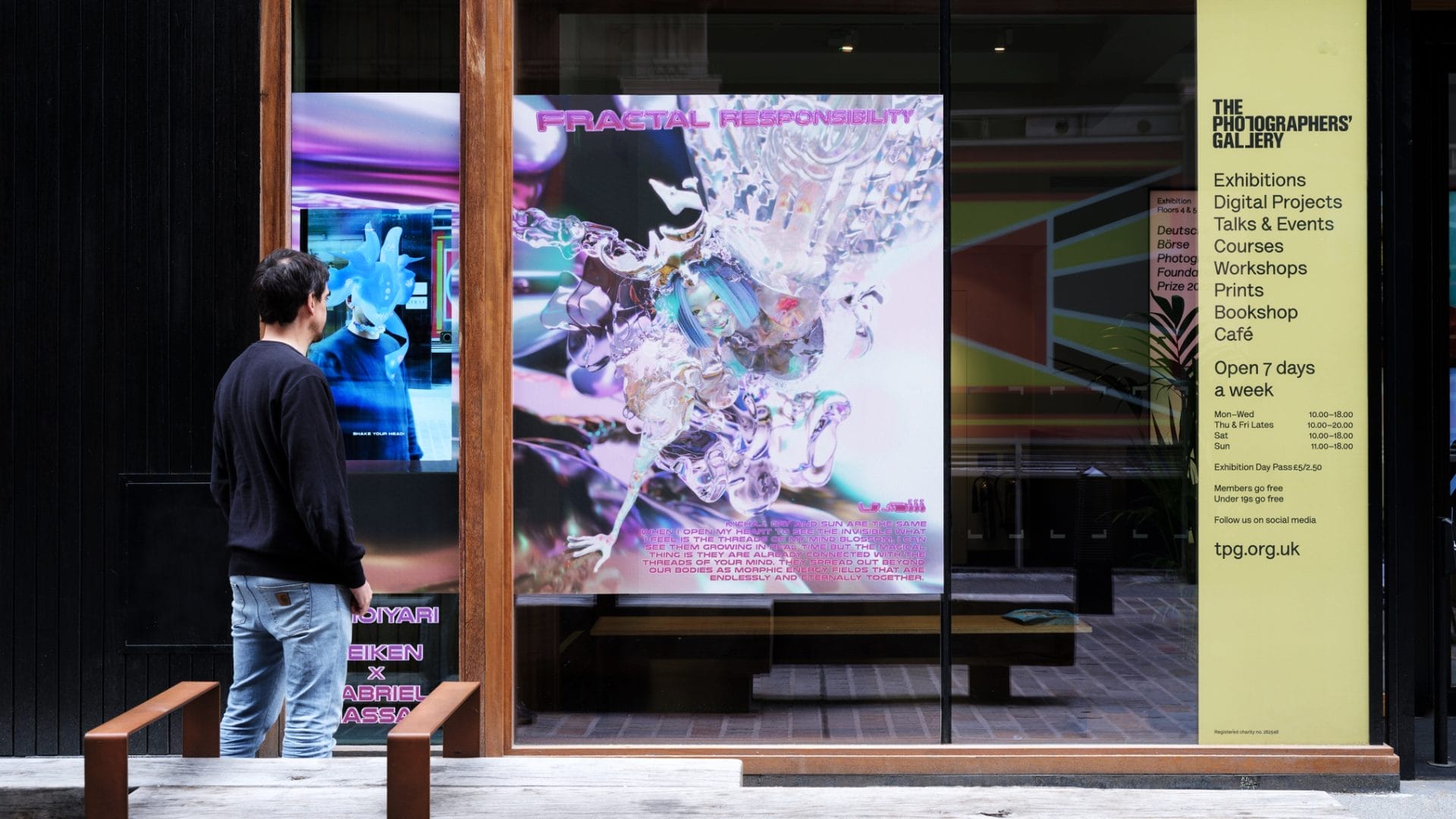
Fakewhale in Dialogue with Huber Huber
Fakewhale has long admired the artistic explorations of Markus and Reto, whose work deeply engages with themes of hope, fear, beliefs, and the failings of humanity. Recently, we featured one of their pieces in a collective press showcase in Basel as part of the WUF 2024 program. This interview seeks to delve into their creative processes and motivations, offering our audience an internal perspective on their diverse artistic expressions, which range from photography to installation.
Fakewhale: Hopes, fears, beliefs, and failures of humanity are central themes in your work. Can you explain how you explore these themes and how you aim to evoke these reflections in your audience?
Huber Huber: The fear of one’s own end resonates with all of these topics. The fear of a meteorite impact, for example, is a primal fear that is still justified and very real today. On the night of September 26-27, 2022, NASA’s DART probe crashed into an asteroid as planned. The aim was to slightly alter the orbit of the asteroid moon Dimorphos. This test provided valuable experience in deflecting meteorites hurtling towards Earth and thus preventing a catastrophe.
Faith in technology has repeatedly set mankind back, as was the case with the sinking of the Titanic. The Titanic was considered the most modern and safest passenger ship of its time. It was advertised as practically unsinkable. People had great faith in the technical progress and engineering skills of the time, and the sinking suddenly called this belief into question. The technological optimism surrounding the climate crisis and the idea that new technologies can mitigate or even reverse the effects of climate change without the need for significant lifestyle and economic changes is tantamount to flying blind. It is a plan A without thinking of plan B. What happens if technical innovations don’t come or don’t come fast enough?
Ever since people have been aware of their finiteness, faith and superstition have played an important role. Many religions would probably not exist if people lived in paradisiacal conditions and were not afraid.
Human failure manifests itself on a small scale and escalates into major issues such as global warming and other environmental disasters. Basically, we are not just concerned with saving the earth or nature, but rather with the survival of our own species. We are also very concerned about geopolitical changes and the increasing socio-economic injustices in the world.
As artists, we try to reflect on these issues, which are closely related. We hope that our art triggers something in the audience, even if it is only astonishment.

Fakewhale: Can you tell us more about how your collaboration started after your studies at HdKZ and how you initially developed your artistic style with small-format collages and drawings?
Huber Huber: We have had a studio since our youth. Art was already an important part of our lives back then. Soon, our money jobs were much smaller than the time we spent on art. From the beginning, we shared a studio but never worked together. On the contrary, we created very different works in terms of form and content and were always in competition with each other.
It was only relatively late that we decided to go to art college. We had to do a group project in a module there, and the teams of two were drawn by lot. So Markus and I were forced to work together for the first time.
Initially, we were uncomfortable with this situation. We decided to realize a film project. During this process, we quickly realized how well the collaboration worked and how much fun it was. This was the catalyst for us deciding to work together exclusively from then on.
We destroyed all the work we had created separately over the last few years and started afresh in terms of content and form. At that time, large-format, very formal works were the trend, but we made a conscious decision to start with small-format works on paper.
Fakewhale: Over time, you shifted your focus towards photography, objects, and installations. What drove this evolution in the media you use?
Huber Huber: This shift actually took place. Our exhibitions were very experimental and installation-based right from the start. As our career progressed, we were given more and more opportunities to exhibit in large spaces such as museums, churches, and even outdoors. We are very interested in spaces, which is perhaps why we still have small teaching commitments in landscape architecture and stage design/scenic space courses. It was important to us that our art works in and with these spaces. So, our works often became very site-specific. Films and photographs are often part of the productions. These two media are very direct, and we are interested in the documentary character of these media in terms of artistic realization.

Fakewhale: Your works often appear calm and harmless at first glance but reveal an unsettling or destructive nature upon closer examination. How do you hope the audience reacts to this contrast?
Huber Huber: Above all, we hope that the public will engage with our art. We believe that the “harmlessness” of our work is also aesthetically interesting. This formal approach can be a door opener, and we believe that it triggers something on an intellectual level.
Our aim is for the public to reflect on what is disturbing and difficult to grasp. We don’t just want to shake things up with art; we also want to tell stories. The concepts are and should be readable in different ways.
Fakewhale: You mentioned that a “wink” or a sense of humor is important in your work, yet it never becomes cynical. How do you integrate this aspect into your works without compromising the seriousness of the message?
Huber Huber: Above all, it is important to us that our art is not moralizing. It should not be instructive but enriching. Humor can be an important strategy for dealing with powerlessness and serious issues. Our art should make people want to experience and think things through. This “wink” should be perceptible without drifting into the ridiculous. We do not believe that this strategy diminishes the seriousness of the message—on the contrary.

Fakewhale: How do you approach the balance between conveying your message and allowing for open interpretation in your work, especially when dealing with complex issues like morality and sustainability?
Huber Huber: In our work, we try to keep the interpretation very open.
We often show the boundaries between “good” and “bad” – especially at the tipping point. We also ask questions with our work and do not condemn. We are aware that we ourselves are among the winners in this world and contribute a great deal to the disaster, and we always try to communicate this clearly.
Of course, we also try to live as socially and sustainably as possible in our everyday lives.
Fakewhale: Your studio work often involves extensive research and conversations with experts. Can you share how this process informs and influences your final creations? How do you choose the materials for your works, and how do these materials contribute to the message you want to convey?
Huber Huber: Our work can be described as conceptual. First, there are topics that concern us and also fit into our current work. We discuss these topics in pairs; at this stage, we begin to research and explore them, and in a further step, we look at possible realizations. In this phase, it soon becomes clear which media we want to use for the realization.
These materials can be very diverse, from meteorites to synthetic fragrances.
We then begin to implement the concept. This phase can be described as experimental throughout.
Fakewhale: We find your experimental approach and the long time dedicated to research and experimentation in the studio fascinating. Can you describe, especially in your recent works, an example of how an idea develops from the initial concept to the final realization?
Huber Huber: We can briefly describe how the work “Eisbär’n müssen nie weinen” (Polar Bears Never Need to Cry) came about. We wanted to create a piece on the subject of global warming and melting ice that could be displayed outside for a summer. It was to be an icicle that melts, with the drops reminiscent of tears.
We have been dealing with the topic of global warming for some time now and have read various reports and books, especially about the melting of the poles. We attended lectures and spoke to experts. It is incredibly exciting but also frightening to delve into these complex interrelationships. We then try to transform this knowledge back into as simple a “picture” as possible.
For this project, we envisioned a staging that was as sculptural as possible. It soon became clear that a melting icicle should be at the center of the sculpture. We sketched different versions of the sculpture. In the end, we decided on a very formal and transparent version consisting of a 180-centimeter-high Plexiglas box in which a mighty icicle made of glass hangs. Water continuously drips from this, collected at the bottom and pumped back up again using a water pump.
Based on this preliminary work, we contacted various glass companies. The small glassblowing company Niesenglass produced a sample and finally the large icicle. An acrylic glass company built the box according to our plans. The biggest challenge was developing a system that would pump the water back up and allow the icicle to drip continuously. We received support from our father, a mechanical engineer, who helped us with technical questions and setting up exhibitions. The biggest difficulty was finding a small, quiet, yet powerful pump. Additionally, the pump sequence had to be timed extremely precisely. This process was very nerve-wracking and time-consuming, but ultimately successful. This work won us the grant from the Canton of Zurich in 2023. The title of the installation “Eisbär’n müssen nie weinen” is a reference to the well-known song by the band Grauzone, which addressed the consequences of industrialization and globalization back in the 1980s.
The seemingly melting icicle, which is not getting any smaller, is constantly weeping tears—only polar bears never have to cry.

Fakewhale: You work with a selected team of experts to realize your ideas. How do you manage these collaborations to maintain consistency in your artistic vision?
Huber Huber: The ideas and concepts are always based on research. Despite the Internet, we are always dependent on experts and institutions. This is inspiring, and the experts are always very sympathetic. Our work gives us access to unusual places, such as historical collections, pigeon lofts, or the Forensic Institute.
When realizing works, we often collaborate with experts and external companies, especially when we can no longer realize an idea on our own. We develop the realization of our concepts in close cooperation with these experts, who often come from non-artistic fields. This process is usually new for the experts and is therefore challenging but also particularly exciting for them.
For example, we regularly work with the lithographer Thomi Wolfensberger and his team or the perfumer Andreas Wilhelm. We always declare this cooperation openly.
Fakewhale:Your works have been exhibited in prestigious and non-traditional contexts. How do these exhibitions influence the perception of your work and what is your relationship with an audience not specialized in contemporary art?
Huber Huber: We exhibit our works wherever the context is appropriate. This can be in an art gallery, public space, or other venues. We find spaces without the typical white cube character particularly exciting. We have exhibited several times in churches, which have continued to be used during these projects. As artists, we must be aware that such places have a strong influence on the legibility of art. We are particularly interested in this.
We strive to present our art as widely as possible because it is important to us that it is accessible to a broad audience, not just those with an affinity for art. This is precisely why we believe that art has a right to exist and an important role to play even in difficult times. Once a year, we try to create an affordable work that costs around 100 euros so that people with a smaller budget can also purchase it. These works are often editions.

Fakewhale: How do you see the evolution of the relationship between art and environmental sustainability in the coming years and what are your future projects in this context?
Huber Huber: Sustainability is currently a trend in the art world. Many artists have jumped on the bandwagon. We find it problematic when art addresses sustainability, but the artist does not live and act sustainably at all. This is where the aspect of greenwashing comes into play, especially when non-sustainable companies focus on sustainable art with their collections and want to draw attention to themselves in this way.
We don’t yet know exactly how our work in this field will develop. Currently, we are working on a larger project titled “Flags for Peace,” which we are realizing for a group exhibition in a major Swiss museum.
For this project, we are looking for old peace flags, peace banners, or flags against war. These may be faded or even torn. In exchange, we are offering a new peace flag designed by us, which will be produced as a signed one-off. The idea behind this is to display the flags sent in as a sign of continuity and the ongoing struggle for peace. We also see these faded and broken flags as a symbol of the powerlessness that is often felt in the fight for peace.

fakewhale
Founded in 2021, Fakewhale advocates the digital art market's evolution. Viewing NFT technology as a container for art, and leveraging the expansive scope of digital culture, Fakewhale strives to shape a new ecosystem in which art and technology become the starting point, rather than the final destination.
You may also like
Arcangelo Sassolino at Villa Panza: The Mechanical Dance of Desire
Inside the Scuderia Grande at Villa Panza, visitors are immersed in a realm where time and movement
Oliver Bleckmann, Patricia Falk, Arvid Jansen, PRESSKUCHEN, pieces under pressure at LABOR Galerie, Cologne
PRESSKUCHEN, pieces under pressure by Oliver Bleckmann, Patricia Falk, and Arvid Jansen, curated by
Every system contains within itself the seeds of its own transcendence
As digital infrastructures increasingly shape not only our environments but also the architectures o




